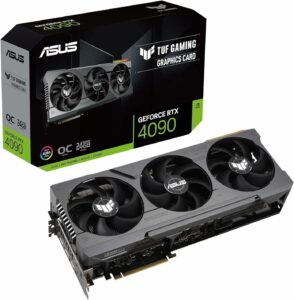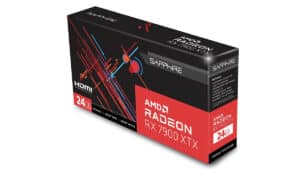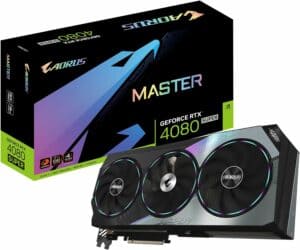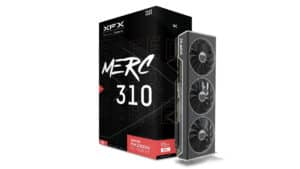Best GPUs for DaVinci Resolve in 2025 – Our top picks
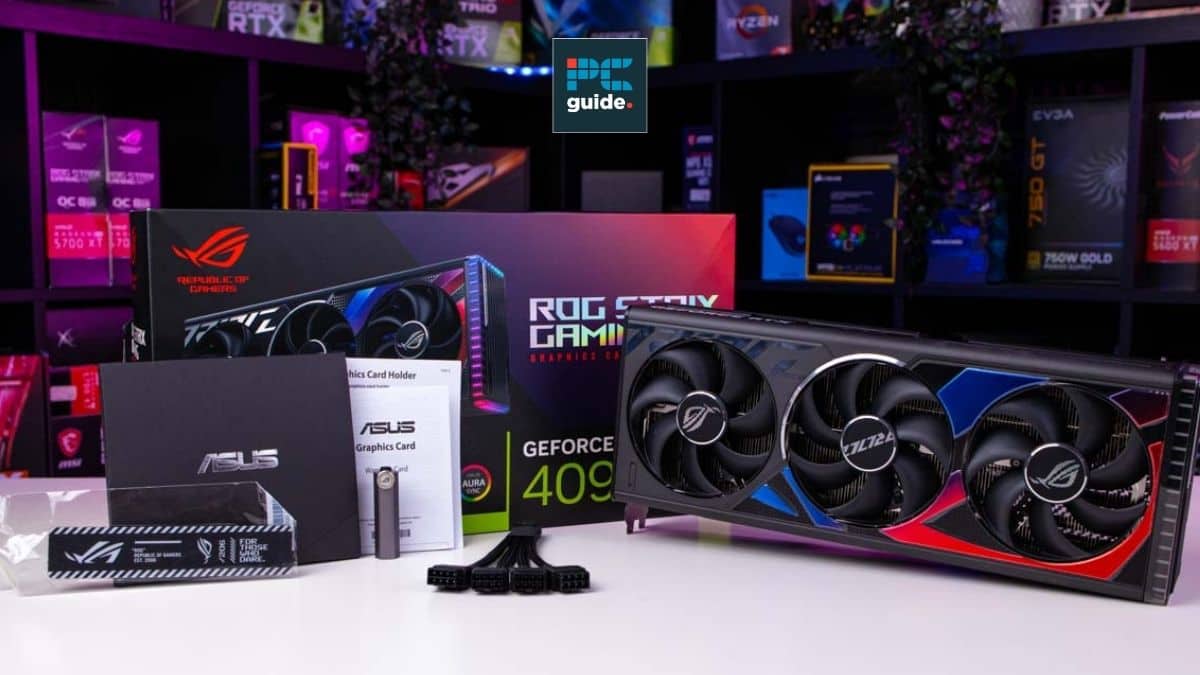
Table of Contents
Are you craving smooth, efficient editing in DaVinci Resolve? Well, we have a comprehensive guide for the best GPU for DaVinci Resolve right here. This guide explores the top graphics cards (GPUs) specifically tailored for this powerful video editing software. We’ll navigate the landscape of performance, specs, and specialized needs, ensuring you find the perfect GPU to fuel your creative vision.
Products at a Glance
How we selected the best GPUs for DaVinci Resolve
We started by researching and comparing the most popular GPUs from across the manufacturing marketplace, including Nvidia, Intel, and AMD. We looked at their specs, performance benchmarks, and user reviews to get a sense of which cards were delivering the best results in DaVinci Resolve. Next, we paid close attention to real-world performance. We considered how each GPU handled different codecs, bit depths, and chroma subsampling levels to ensure we were recommending cards that could handle a variety of workflows.
In addition to raw performance, we also considered the practical aspects of each GPU. We took into account factors like power consumption, heat output, and compatibility with various systems to make sure we were recommending GPUs that would be a good fit for a wide range of users.
Finally, we reached out to the DaVinci Resolve user community to gather feedback and insights from professionals and enthusiasts alike. We wanted to hear firsthand what GPUs people were using and loving, as well as any potential issues or limitations they’d encountered. Interested in more GPU buying guides? We have our overall picks for the best graphics cards available now. Be sure to check it out.
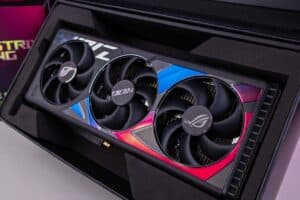
Product Reviews
- Impressive features lineup, including DLSS and Ray Tracing
- Fastest and most powerful GPU on the market
- Excellent for content creation
- Extremely high price tag
- Power consumption is overkill when used solely for DaVinci
- Not appropriate for budget-conscious or entry level users
When it comes to the best GPU for DaVinci Resolve, the NVIDIA GeForce RTX 4090 steals the show as the ultimate choice for those seeking top-notch performance. Perfect for streaming or gaming, this high-end card delivers outstanding visuals and unparalleled power for any task you need it for.
Built on a 5nm process, the RTX 4090 features the cutting-edge AD102 graphics processor and supports DirectX 12 Ultimate. This means it’s ready for the future, handling the latest games and upcoming features like hardware-ray tracing and variable-rate shading with ease. Packing 16,384 shading units, 512 texture mapping units, 176 ROPs, 512 tensor cores, and 128 ray tracing acceleration cores, this GPU is a force to be reckoned with.
The RTX 4090 comes with 24GB of GDDR6X memory and a 384-bit memory interface, providing plenty of memory bandwidth for high-resolution streaming and intense gaming sessions. The GPU runs at 2235 MHz, boosting up to 2520 MHz, while the memory operates at 1313 MHz (21 Gbps effective).
Don’t let the triple-slot design and 450W maximum power draw fool you – this GPU is a powerhouse. It requires a 16-pin power connector and offers 1x HDMI 2.1 and 3x DisplayPort 1.4a output options. Connecting via a PCI-Express 4.0 x16 interface, the card measures 304mm x 137mm x 61mm and features a triple-slot cooling solution. In order to test out this product, we conducted a full RTX 4090 review which available now to check out.
- The fastest AMD GPU on the market
- Great power efficiency
- Chiplet design is well put together
- No Nvidia features like DLSS or Ray Tracing
- Not as powerful as RTX 4090
- High-end price point
For DaVinci Resolve users who prefer AMD GPUs, the Radeon RX 7900 XTX is a fantastic option, delivering stellar performance and AMD’s excellent encoding technology. As AMD’s flagship GPU from their latest generation, the RX 7900 XTX easily handles demanding streaming tasks without breaking a sweat.
The Navi 31 graphics processor, built on a 5nm process, powers the Radeon RX 7900 XTX and supports DirectX 12 Ultimate. This guarantees compatibility with current and future games, as well as upcoming features like hardware-raytracing and variable-rate shading. With 6,144 shading units, 384 texture mapping units, 192 ROPs, and 96 raytracing acceleration cores, this GPU packs a punch.
Featuring 24GB of GDDR6 memory and a 384-bit memory interface, the RX 7900 XTX provides ample memory bandwidth for seamless streaming and gaming. The GPU operates at 1855 MHz, boosting up to 2499 MHz, while the memory runs at 2500 MHz (20 Gbps effective).
The RX 7900 XTX is designed with a dual-slot cooling solution, sporting a 355W maximum power draw and requiring 2x 8-pin power connectors. The card offers 1x HDMI 2.1a, 2x DisplayPort 2.1, and 1x USB Type-C display outputs. Measuring 287mm x 110mm x 51mm, it connects to your system using a PCI-Express 4.0 x16 interface. To check out more about this product, head over to our RX 7900 XTX review.
- DLSS 3 and Ray Tracing features
- Strong VRAM performance
- Cost less than the RTX 4090
- Extremely large dimensions, difficulty to fit into build
- Not top tier performance, but price remains high
The RTX 4080 Super is a compelling choice for DaVinci Resolve due to its impressive combination of factors. As a GPU, the Nvidia RTX 4080 Super delivers top-tier performance. It boasts exceptional raw power, translating to smooth playback, fast rendering, and efficient handling of complex effects like noise reduction and color grading.
Furthermore, the RTX 4080 Super has ample GDDR6X memory. With 16GB of GDDR6X memory, it can comfortably store large video frames and complex project files, minimizing bottlenecks and ensuring smooth operation even with demanding projects. In addition to memory, the model also has several advanced features like hardware-accelerated encoding and decoding, which can significantly accelerate video editing workflows, especially for tasks like exporting and transcoding videos.
While still quite pricey, the RTX 4080S Super offers excellent value for demanding users who prioritize performance and efficiency in DaVinci Resolve. For more on this product, head over to our RTX 4080 Super review.
- One of the fastest AMD GPUs on the market
- Excellent efficiency gains
- Innovative chiplet design
- Weaker ray tracing and AI performance
- Performance is weaker than RTX 4090 and RX 7900 XTX
The AMD Radeon RX 7900 XT, a slightly toned-down version of its XTX counterpart, delivers fantastic performance for those who need a potent GPU for DaVinci Resolve without opting for top-tier choices. This graphics card is perfect for streamers handling video games, content creation, or other tasks, providing exceptional performance across various applications.
Featuring the Navi 31 graphics processor and built on a 5 nm process, the RX 7900 XT supports DirectX 12 Ultimate, ensuring compatibility with the latest games and upcoming features such as hardware-raytracing and variable-rate shading. Equipped with 5,376 shading units, 336 texture mapping units, 192 ROPs, and 84 raytracing acceleration cores, this GPU delivers a smooth experience for all your streaming needs.
The RX 7900 XT boasts 20 GB of GDDR6 memory, paired with a 320-bit memory interface, providing ample memory bandwidth for demanding streaming tasks. Operating at a base clock of 1500 MHz and boosting up to 2394 MHz, the GPU’s memory runs at 2500 MHz (20 Gbps effective).
With a 300W maximum power draw, the dual-slot RX 7900 XT requires 2x 8-pin power connectors. It offers display outputs such as 1x HDMI 2.1a, 2x DisplayPort 2.1, and 1x USB Type-C. Connecting to your system via a PCI-Express 4.0 x16 interface, the card measures 276mm x 110mm x 51mm and features a dual-slot cooling solution.
Priced at a reasonable $899, the AMD Radeon RX 7900 XT provides excellent value and performance for DaVinci Resolve users who seek a powerful GPU without splurging on top-tier options. To put it casually, this GPU is an amazing choice for those wanting high-performance streaming capabilities without emptying their wallets. Take a peak at our RX 7900 XT review for more on benchmarks, specs, and performance details.
Considerations for the best GPUs for DaVinci Resolve
When searching for the best GPUs for DaVinci Resolve, there are a few key features and considerations to keep in mind. The performance of GPU-based hardware decoding in Resolve depends on various factors, including the video card, codec, bit depth, and chroma subsampling level of your footage. With so many variables at play, it’s crucial to have a clear understanding of your specific requirements and how different GPUs can help you achieve your creative goals.
To start with, you’ll need to decide between Nvidia and AMD GPUs. From our experience, Nvidia cards tend to offer better performance in DaVinci Resolve for the same price. Additionally, they have a reputation for being slightly more reliable in terms of hardware and driver stability. While AMD cards can also be a good choice in certain scenarios, we generally recommend Nvidia GPUs unless there’s a clear advantage to using an AMD card.
When evaluating GPUs, consider the following factors:
Compatibility
Ensure that the GPU you select is compatible with your system, including your motherboard, power supply, and cooling solution. Look for a GPU that can handle the codecs, bit depth, and chroma subsampling levels of your footage for smooth playback and efficient rendering.
VRAM
DaVinci Resolve can benefit from having more VRAM, especially when working with high-resolution footage or complex projects. Aim for a GPU with at least 8GB of VRAM for optimal performance.
Multi-GPU support
If you’re using the Studio Edition of DaVinci Resolve, consider the potential benefits of having multiple GPUs in your system for increased performance.
Price
Finding the right balance between cost and capability is crucial. Selecting a GPU that delivers exceptional performance without draining your wallet is key. Opting for purchases during seasonal sales, such as Black Friday or Spring, is advisable. Additionally, utilizing price tracking tools like Camelcamelcamel can help you snag a deal when prices drop.
What is the best GPU for DaVinci Resolve?
The best GPU for DaVinci Resolve currently on the market is the Nvidia RTX 4090. Boasting superb performance, power, and specs, nothing comes close to the abilities of this GPU. Perfect for streaming or gaming, this high-end card delivers outstanding visuals and unparalleled power for any task you need it for.
Our Verdict
In conclusion, a robust GPU is crucial for DaVinci Resolve users as it directly impacts rendering and playback performance, allowing for smoother streaming experiences and quicker processing times. Choosing the right GPU can make a significant difference in your workflow, and our top four recommendations cater to different needs and budgets.
The NVIDIA GeForce RTX 4090 is the ultimate choice for those seeking unrivaled performance and top-of-the-line features. The AMD Radeon RX 7900 XTX offers exceptional performance at a more budget-friendly price point for those committed to the AMD ecosystem. Which will you choose?

